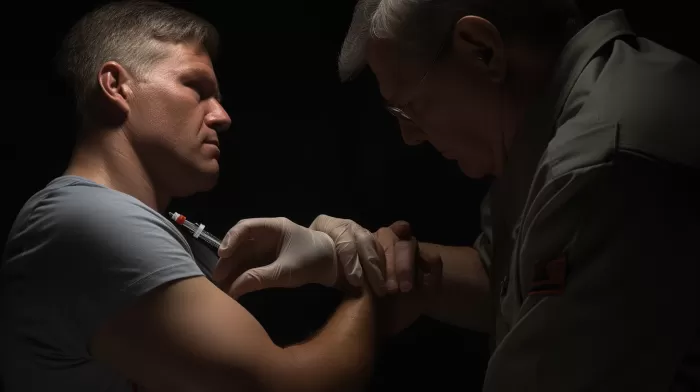Flu season is just around the corner, and with this in mind, many people are considering getting the flu shot. But, did you know that there’s a rare side effect that could cause you pain for months after the shot? It’s called Shoulder Injury Related to Vaccine Administration (SIRVA). Fortunately, there are three easy steps you can take to prevent this painful side effect.
What is SIRVA?
When you get a vaccine, it’s normal to experience some muscle pain at the injection site for a few days. However, for some people, the pain doesn’t go away. Instead, it gets worse and starts affecting their mobility and strength in the area where the vaccine was administered. This is known as SIRVA.
SIRVA is more likely to occur when vaccines are injected into the wrong spot on the arm. While it’s a rare condition, the number of reported cases has been increasing. It was first documented in 2006, and since then, several studies have found a connection between vaccines and ongoing shoulder pain.
In 2015, SIRVA was officially recognized by the US federal government as a vaccine injury eligible for compensation through the Vaccine Injury Compensation Program. Research has also shown that SIRVA is more likely to happen with vaccines that you’ve already developed some immunity to, like the flu shot.
Symptoms of SIRVA
SIRVA is characterized by pain, weakness, and impaired mobility in the arm where the injection took place. The pain can be so severe that it interferes with daily activities like brushing your teeth, putting on clothes, or lifting objects. If you experience this level of pain within 48 hours of getting a vaccine, and it doesn’t respond to over-the-counter painkillers, you could be dealing with SIRVA.
Preventing SIRVA
To reduce your risk of SIRVA during flu season, you can follow these three steps when getting your flu shot:
1. Wear a sleeveless shirt or one with easily pulled-up sleeves.
Having easy access to your arm decreases the chances of receiving the vaccine in the wrong spot, which is one of the potential causes of SIRVA.
2. Don’t pull the neck of your shirt down to expose your arm.
Administering the vaccine too high on your arm is riskier for developing SIRVA. The condition is closely linked to receiving the vaccine in your shoulder capsule (the membrane around your shoulder) rather than the deltoid muscle (the muscle on the upper part of the arm and top of the shoulder).
3. Put your hand on your hip with your elbow out and away from your body.
This position relaxes the deltoid muscle, making it easier for the medical professional to administer the vaccine in the right spot.
If you suspect you have SIRVA, visit a doctor for an ultrasound scan, which is how the condition is diagnosed. In most cases, you can significantly improve your pain with physiotherapy.
For most people, SIRVA symptoms go away after physiotherapy treatment, but not everyone is so lucky. If your severe shoulder pain related to a vaccine doesn’t improve, visit the government’s Vaccine Injury Compensation Program website to see if you qualify to file a claim.
Although SIRVA is rare, knowing how to prevent it can help you stay pain-free as you receive your flu shot. By understanding the risks and taking these three easy steps, you can protect yourself from this painful side effect while staying safe and healthy during flu season.



